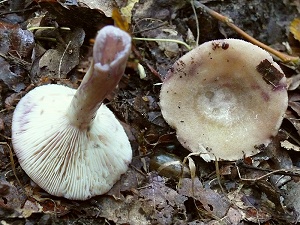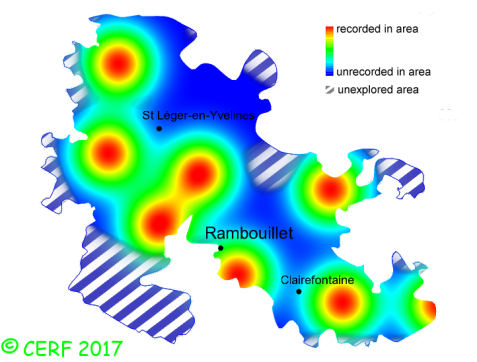| Lactarius uvidus (Fr.:Fr.) Fr. |
|
|
|
|
|
|
The cap is greyish, brown more or less lilaceous. The cap surface is smooth. The stem is whitish stained with ochre, without ring. The flesh is white, turning slowly lilac-purple when exposed to air (30mns); its taste is mild then bitter; its texture is grainy (breaking like a chalk stick), exuding when cut a whitish milk, becoming purple when exposed to air. The gills are whitish stained with ochre or purple, decurrent to adnate, crowded . The spore print is white. This species is mycorrhizal. It grows in damp areas of coniferous or broad-leaved woods, on a rather acid soil, with birch, willow, spruce. The fruiting period takes place from July to November.
Chemical tests : none. Distinctive features : greasy to viscid, violet-grey to buff cap; milk and flesh white, becoming lilac when exposed to air; in damp places Lactarius uvidus is infrequent and scattered in the forest of Rambouillet, and is infrequent, more generally speaking . | ||
|
page updated on 14/01/18

